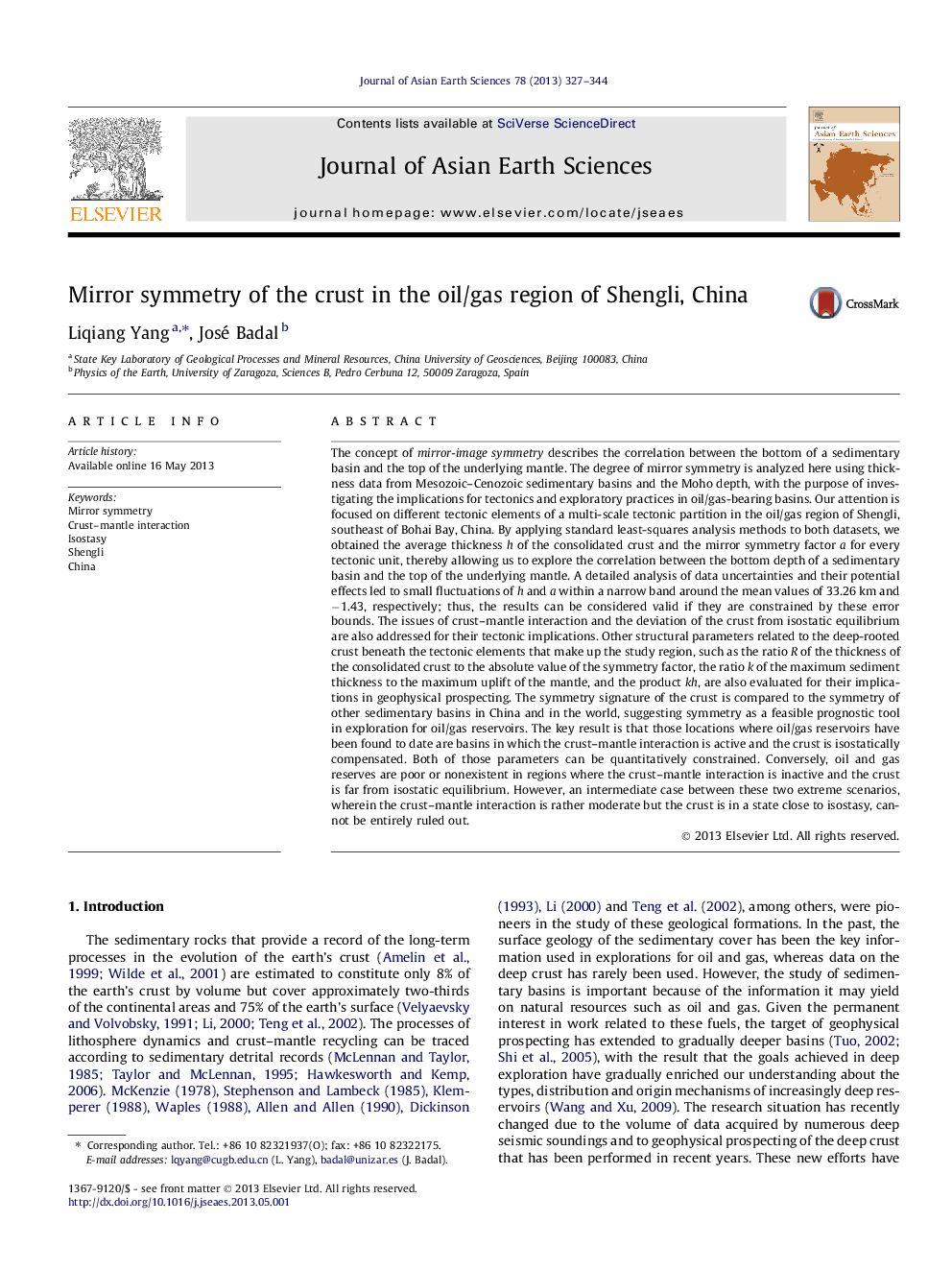| کد مقاله | کد نشریه | سال انتشار | مقاله انگلیسی | نسخه تمام متن |
|---|---|---|---|---|
| 4730852 | 1640389 | 2013 | 18 صفحه PDF | دانلود رایگان |

• The mirror symmetry of the crust is analyzed in Shengli, SE of Bohai Bay, China.
• The results are contrasted with those obtained for some other sedimentary basins.
• We discuss the implications for tectonics and exploratory practice in basins.
• Several structural parameters are useful tools for investigating the oil/gas content.
The concept of mirror-image symmetry describes the correlation between the bottom of a sedimentary basin and the top of the underlying mantle. The degree of mirror symmetry is analyzed here using thickness data from Mesozoic–Cenozoic sedimentary basins and the Moho depth, with the purpose of investigating the implications for tectonics and exploratory practices in oil/gas-bearing basins. Our attention is focused on different tectonic elements of a multi-scale tectonic partition in the oil/gas region of Shengli, southeast of Bohai Bay, China. By applying standard least-squares analysis methods to both datasets, we obtained the average thickness h of the consolidated crust and the mirror symmetry factor a for every tectonic unit, thereby allowing us to explore the correlation between the bottom depth of a sedimentary basin and the top of the underlying mantle. A detailed analysis of data uncertainties and their potential effects led to small fluctuations of h and a within a narrow band around the mean values of 33.26 km and −1.43, respectively; thus, the results can be considered valid if they are constrained by these error bounds. The issues of crust–mantle interaction and the deviation of the crust from isostatic equilibrium are also addressed for their tectonic implications. Other structural parameters related to the deep-rooted crust beneath the tectonic elements that make up the study region, such as the ratio R of the thickness of the consolidated crust to the absolute value of the symmetry factor, the ratio k of the maximum sediment thickness to the maximum uplift of the mantle, and the product kh, are also evaluated for their implications in geophysical prospecting. The symmetry signature of the crust is compared to the symmetry of other sedimentary basins in China and in the world, suggesting symmetry as a feasible prognostic tool in exploration for oil/gas reservoirs. The key result is that those locations where oil/gas reservoirs have been found to date are basins in which the crust–mantle interaction is active and the crust is isostatically compensated. Both of those parameters can be quantitatively constrained. Conversely, oil and gas reserves are poor or nonexistent in regions where the crust–mantle interaction is inactive and the crust is far from isostatic equilibrium. However, an intermediate case between these two extreme scenarios, wherein the crust–mantle interaction is rather moderate but the crust is in a state close to isostasy, cannot be entirely ruled out.
Figure optionsDownload as PowerPoint slide
Journal: Journal of Asian Earth Sciences - Volume 78, 15 December 2013, Pages 327–344